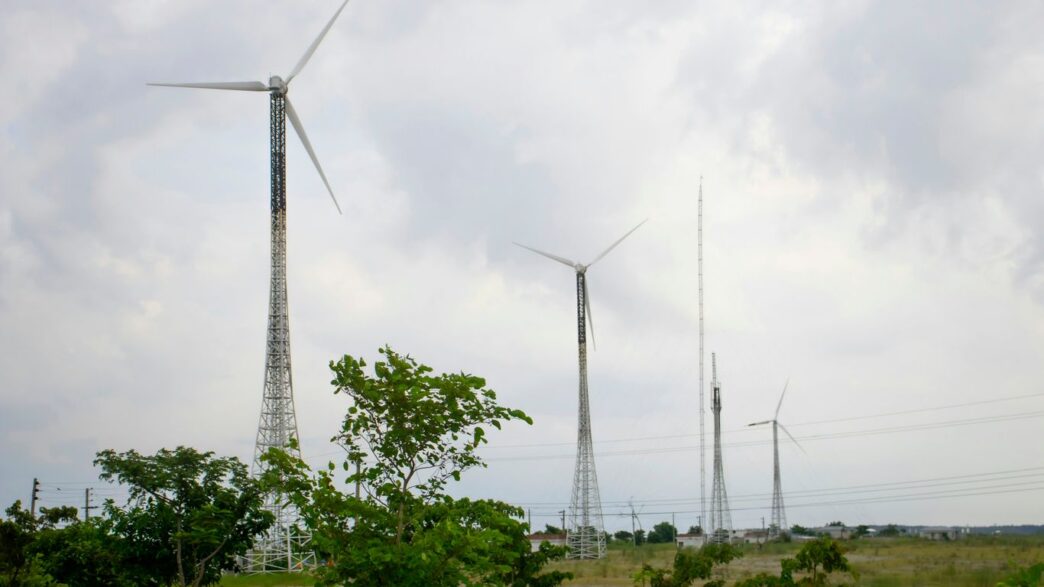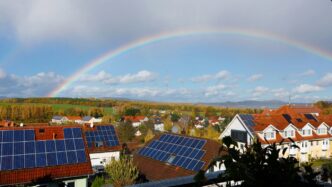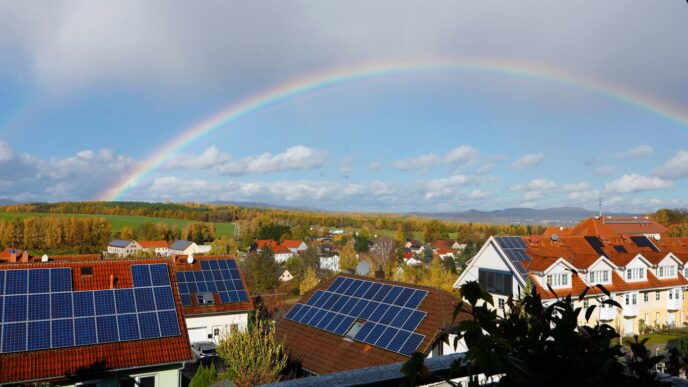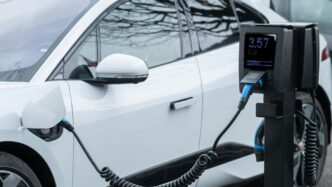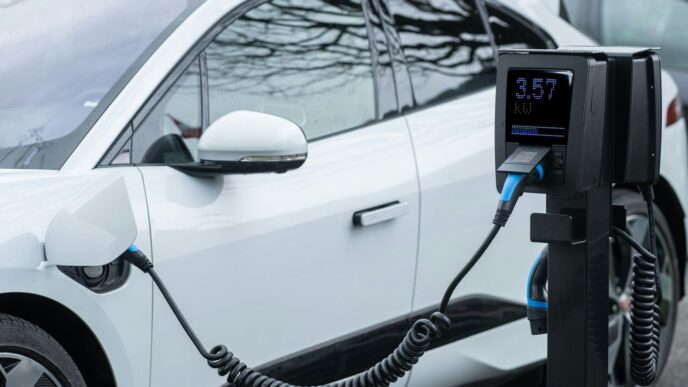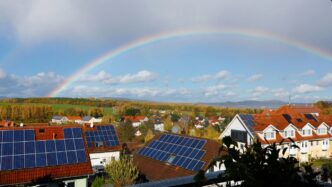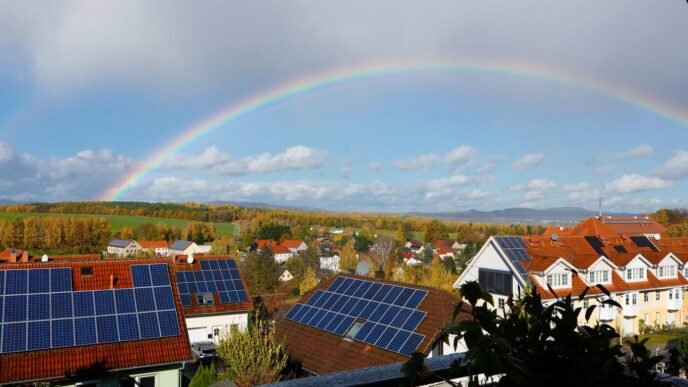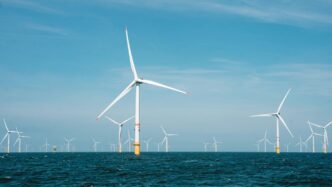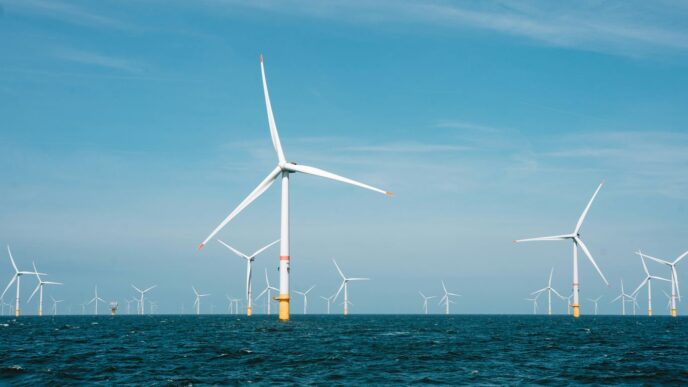There’s a lot happening in the world of power plants right now. From new ways to build reactors to countries looking to get into nuclear energy, it feels like things are really moving. We’re also seeing big changes in how nuclear fuel is made and how smaller reactors might change the game. Plus, there’s talk about using nuclear power for clean hydrogen and how renewables are continuing to grow. Let’s break down some of the latest power plant news.
Key Takeaways
- New reactor designs like Molten Salt Reactors and High-Temperature Gas Reactors are showing promise for safer and more efficient nuclear power.
- Several countries are exploring or expanding their use of nuclear energy, with Africa showing growing interest in nuclear power projects.
- Advanced nuclear fuels, including Accident Tolerant Fuels and High-Assay Low-Enriched Uranium, are moving closer to commercial use, improving safety and performance.
- Small Modular Reactors (SMRs) are being developed with various designs, aiming to address challenges in licensing and deployment for decarbonization efforts.
- Nuclear power is being eyed as a way to produce clean hydrogen efficiently, with policy support emerging to drive this development.
Innovations in Nuclear Reactor Technology

Nuclear reactor technology is really moving forward these days. It feels like every few months there’s a new idea or a tweak that could make things safer, more efficient, or just plain better. We’re seeing some pretty cool stuff happening, and it’s not just theoretical anymore. Some of these designs are actually getting close to being built and used.
Molten Salt Reactors Leading the Charge
Molten Salt Reactors, or MSRs, are getting a lot of attention. The big idea here is that instead of solid fuel rods, the nuclear fuel is dissolved in a liquid salt. This has some neat advantages. For starters, they can often run at higher temperatures, which means more electricity can be generated from the same amount of fuel. Plus, many MSR designs are inherently safer. If something goes wrong, the salt can drain out, stopping the reaction automatically. Companies like Kairos Power and Terrestrial Energy are pushing these designs, with hopes of seeing them commercially available in the mid-2030s. It’s a big shift from the reactors we’re used to.
High-Temperature Gas Reactors for Enhanced Efficiency
Then there are High-Temperature Gas Reactors (HTGRs). These use gas, like helium, as a coolant and can reach really high temperatures. China already has one of these, the HTR-PM, up and running. The big draw here is efficiency. Higher temperatures mean you can get more power out, and these reactors are also good for more than just making electricity. They can provide heat for industrial processes, which is a big deal for cutting down on emissions in those sectors. Companies like X-energy in the US are also working on similar advanced gas reactor concepts. The potential for these reactors to provide clean, high-grade heat is a major innovation.
Advancements in Fast Reactor Designs
Fast reactors are another area seeing a lot of development. These reactors use fast neutrons to cause fission, and some designs can even ‘burn’ existing nuclear waste, which could help solve one of nuclear power’s biggest challenges. TerraPower, founded by Bill Gates, is working on a design called Natrium, which is a fast reactor that also incorporates some of the safety features we’re seeing in other advanced designs. These reactors are often designed with modularity in mind, meaning they could be built in factories and then assembled on-site, potentially speeding up construction and lowering costs. They’re also being looked at for their ability to provide stable power that can complement intermittent renewables.
Global Nuclear Energy Expansion and Investment
It’s pretty wild to see how much the world is talking about nuclear energy again. After a bit of a lull, it feels like it’s making a serious comeback, and honestly, it makes sense. With the demand for electricity just shooting up, especially with all the new AI stuff and data centers needing power, we need reliable, clean sources.
Financing the Future of Nuclear Power
Getting the money to build new nuclear plants has always been a big hurdle. But things are shifting. Back in 2024, a bunch of major banks actually said they’d back nuclear projects. This is a pretty big deal because it shows that the financial world is starting to see nuclear as a solid part of the clean energy picture. We’re talking about new ways to fund these projects too, like green bonds and ways for different investors to share the risk. The goal is to get more private money involved, which could really speed things up.
New Countries Embracing Nuclear Energy
It’s not just the usual players getting back into nuclear. Countries like Indonesia and Malaysia are looking at nuclear power to help them move away from fossil fuels. Kazakhstan is also making big decisions about building its first plants. Even Poland is moving forward with its plans. These countries are looking for energy security and ways to meet their climate goals. It’s a global effort, really.
Africa’s Growing Nuclear Ambitions
Africa is also starting to explore nuclear energy more seriously. Countries like Ghana are aiming to have nuclear plants up and running by 2030. This is all about finding sustainable ways to power their growing economies and provide electricity to more people. It’s a long road, and there are definitely challenges, but the interest is definitely there.
Transformative Nuclear Fuel Technologies
Accident Tolerant Fuels Entering Commercial Trials
Things are really moving with nuclear fuel. We’re seeing the start of commercial trials for what they call Accident Tolerant Fuels, or ATFs. Basically, these are designed to handle tougher conditions in a reactor, giving operators more time to react if something unexpected happens. It’s a big deal for safety, making nuclear power even more reliable. Think of it like upgrading your car’s brakes to be super robust – you feel a lot more secure.
The Rise of High-Assay Low-Enriched Uranium
Another key development is the increasing availability of High-Assay Low-Enriched Uranium, or HALEU. This type of fuel is pretty important for some of the newer, more advanced reactor designs that are on the horizon. It’s not as common as the standard stuff, so getting more of it out there is a big step for building those next-generation plants. It’s like making sure you have the right kind of specialized building blocks ready before you start construction.
Advancements in TRISO and Thorium Fuels
We’re also seeing solid progress with TRISO fuel. This stuff is known for being really tough and safe, and companies are starting to produce it commercially. X-energy, for example, is a big player here. Beyond that, there’s a lot of interest in thorium fuels. Countries like India are looking into it seriously. Thorium has some potential benefits, like producing less long-lived waste and being harder to use for weapons. It’s a different path, but one that could offer advantages down the line. It feels like we’re exploring a few different routes to make nuclear fuel even better and safer for the future.
Small Modular Reactors Shaping the Energy Landscape
It feels like everywhere you look these days, there’s talk about Small Modular Reactors, or SMRs. And honestly, it’s about time. These aren’t your grandpa’s giant nuclear plants; they’re smaller, more flexible, and designed to fit into our modern energy needs. By 2025, we’re seeing a real push with over 80 different SMR designs being developed. Companies like NuScale, with their VOYGR modules, are already getting certified, which is a huge step. Then there’s GE Hitachi’s BWRX-300 and Rolls-Royce’s designs, all aiming to make nuclear power more affordable and accessible.
Diverse SMR Designs Poised for 2025
The variety of SMR designs is pretty wild. You’ve got everything from traditional light-water reactors to more advanced concepts like molten salt reactors and high-temperature gas reactors. Some are even being designed to go underground, which sounds pretty futuristic. This diversity means there’s likely an SMR solution for almost any situation, whether it’s powering a remote community or a massive data center. Speaking of data centers, the demand for reliable, carbon-free power is skyrocketing, and SMRs are looking like a perfect fit. Tech giants are already signing deals to get SMRs online to power their operations. It’s a big shift, and 2025 looks like the year we’ll start seeing some of these specialized SMRs actually come online.
Addressing Licensing and Deployment Challenges
Of course, it’s not all smooth sailing. Getting these new reactor designs approved by regulators is a big hurdle. Each country has its own rules, and these SMRs are pretty different from what’s been approved before. Then there’s the whole process of actually building and deploying them. Supply chains need to be ready, and there’s still a need to build public trust. It’s a complex puzzle, but progress is being made. We’re seeing pilot projects in places like Russia and China giving us real-world data, which helps everyone learn.
SMRs for Decarbonization and Integration
What’s really exciting is how SMRs can help us fight climate change. They offer a steady stream of clean energy, which is exactly what we need to replace fossil fuels. Plus, their smaller size means they can be built closer to where the power is needed, or even in places that were previously hard to reach with traditional power plants. They can also work alongside renewable energy sources like wind and solar, helping to balance out the grid when the sun isn’t shining or the wind isn’t blowing. This flexibility is key to achieving our decarbonization goals.
The Nexus of Nuclear Power and Clean Hydrogen

Nuclear Energy for Efficient Electrolysis
So, nuclear power and clean hydrogen. It sounds like a match made in the future, right? And honestly, it’s starting to look that way. Nuclear reactors can do more than just power our grids; they can also be a pretty big deal for making clean hydrogen. Think about it: electrolysis, the process of splitting water into hydrogen and oxygen using electricity, needs a lot of power. Nuclear plants can provide that power, and some advanced reactors can even supply the heat needed to make the whole process more efficient. It’s not just theoretical, either. Companies are already looking at this. For example, there are projects in the US and France exploring how to use nuclear energy for hydrogen production. It’s a way to use existing nuclear infrastructure to create a fuel that can be used in so many ways, from transportation to industry.
Policy Support for Nuclear Hydrogen Production
To really get this hydrogen thing off the ground with nuclear power, you need more than just good ideas and technology. You need policies that make sense and encourage investment. Governments are starting to see the potential here. Things like tax credits, similar to what’s available for other clean energy projects, can make a big difference. These policies help offset some of the initial costs and make nuclear-hydrogen projects more attractive to businesses. It’s about creating a stable environment where companies feel confident putting their money into these new ventures. Without that support, it’s tough to get big projects moving, especially when you’re talking about new technologies.
Future Outlook for Nuclear-Powered Hydrogen
What’s next for nuclear-powered hydrogen? Well, the next few years are going to be pretty interesting. We’re likely to see more pilot projects popping up, giving us real-world data on how well these systems work and how much it costs to produce hydrogen this way. Technology is always improving, too. New electrolysis methods and reactor designs that are specifically made for hydrogen production could really drive down costs. By 2025, we might start seeing more concrete examples of nuclear hydrogen making a real impact. Of course, there are still hurdles. Public perception is always a factor with nuclear energy, and getting the regulations right is key. But if we can get past those, nuclear hydrogen could become a significant part of our clean energy future, helping us decarbonize sectors that are hard to electrify.
Renewable Energy’s Ascendancy and Storage Innovations
It’s pretty wild to think about, but renewable energy is really starting to take over. We’re talking about a future where solar and wind aren’t just niche options anymore; they’re becoming the main event. By 2025, it looks like renewables are set to actually produce more electricity globally than coal. That’s a huge deal for the planet, honestly.
Renewables Surpassing Coal Power
This shift isn’t just a small change; it’s a major turning point. Renewables already make up a good chunk of our power, over 30% in 2024, and that number is just climbing. It means we’re getting serious about cutting down on pollution and moving away from the old ways of doing things. It’s not just about electricity grids either; things like green hydrogen are starting to show up in heavy industry and even long-haul transport, which are notoriously hard to clean up.
Perovskite Solar Cells Revolutionizing Solar
When it comes to solar, there’s a new player making waves: perovskite solar cells. These things are seriously impressive. They’ve gone from being pretty basic a decade ago to being able to compete with, and sometimes even beat, traditional silicon panels in terms of how much power they can convert. Scientists are even layering them with silicon to get even higher efficiencies, pushing past what silicon can do on its own. The big challenge right now is making them last longer, as they can be a bit sensitive to things like moisture and heat. But people are working on ways to protect them, and the manufacturing side is getting figured out too. Plus, they can be made thin and flexible, which opens up all sorts of possibilities for putting solar power on windows, curved roofs, or even portable gadgets. It feels like they could really change the game for solar power.
Battery Energy Storage Systems Advancements
Of course, you can’t talk about renewables without talking about storage. That’s where Battery Energy Storage Systems, or BESS, come in. They’re the unsung heroes that make sure we have power even when the sun isn’t shining or the wind isn’t blowing. It’s what keeps the lights on reliably. Lithium Iron Phosphate (LFP) batteries are becoming really popular for this because they’re stable and last a long time. But we’re also seeing new types of batteries, like those using sodium or zinc, which are cheaper and safer, and help avoid issues with sourcing materials. The market for these systems is growing like crazy. We’re also seeing other storage tech, like flow batteries for big projects and thermal storage using things like molten salt to capture heat from solar power. The whole energy storage market is projected to grow significantly, which is great news for making renewables a constant power source.
Wrapping It Up
So, looking at everything that’s been happening, it’s pretty clear the power plant world isn’t standing still. We’ve seen a lot of movement, from new ways to finance nuclear energy to some really interesting reactor designs that could change the game. Plus, renewables are really starting to take off, with solar and wind getting more efficient and storage solutions improving. It feels like we’re on the edge of some big shifts, and it’ll be fascinating to see how all these different technologies and investments play out in the coming years. It’s not just about building more plants; it’s about building smarter, cleaner, and more reliable ones for the future.


